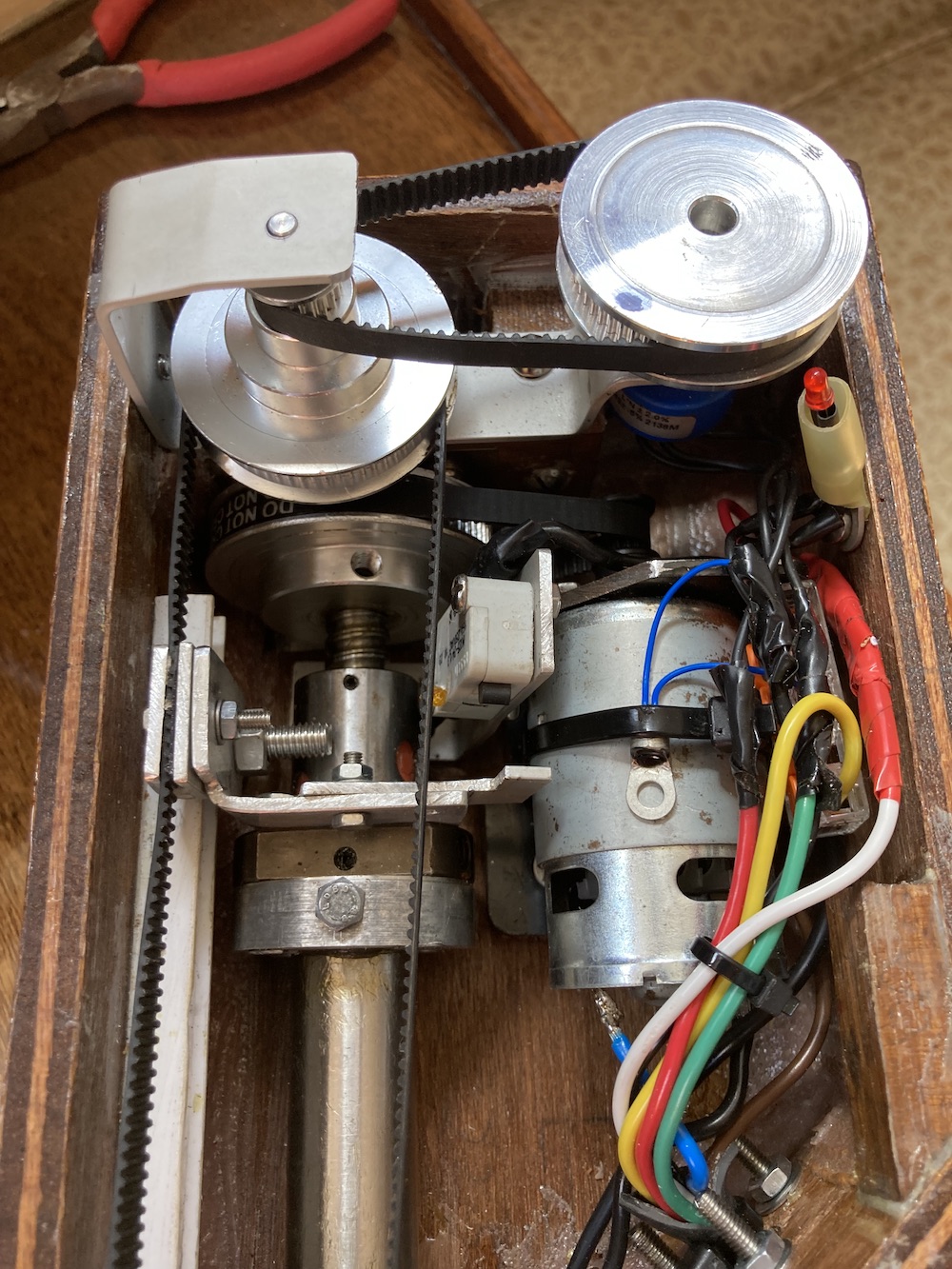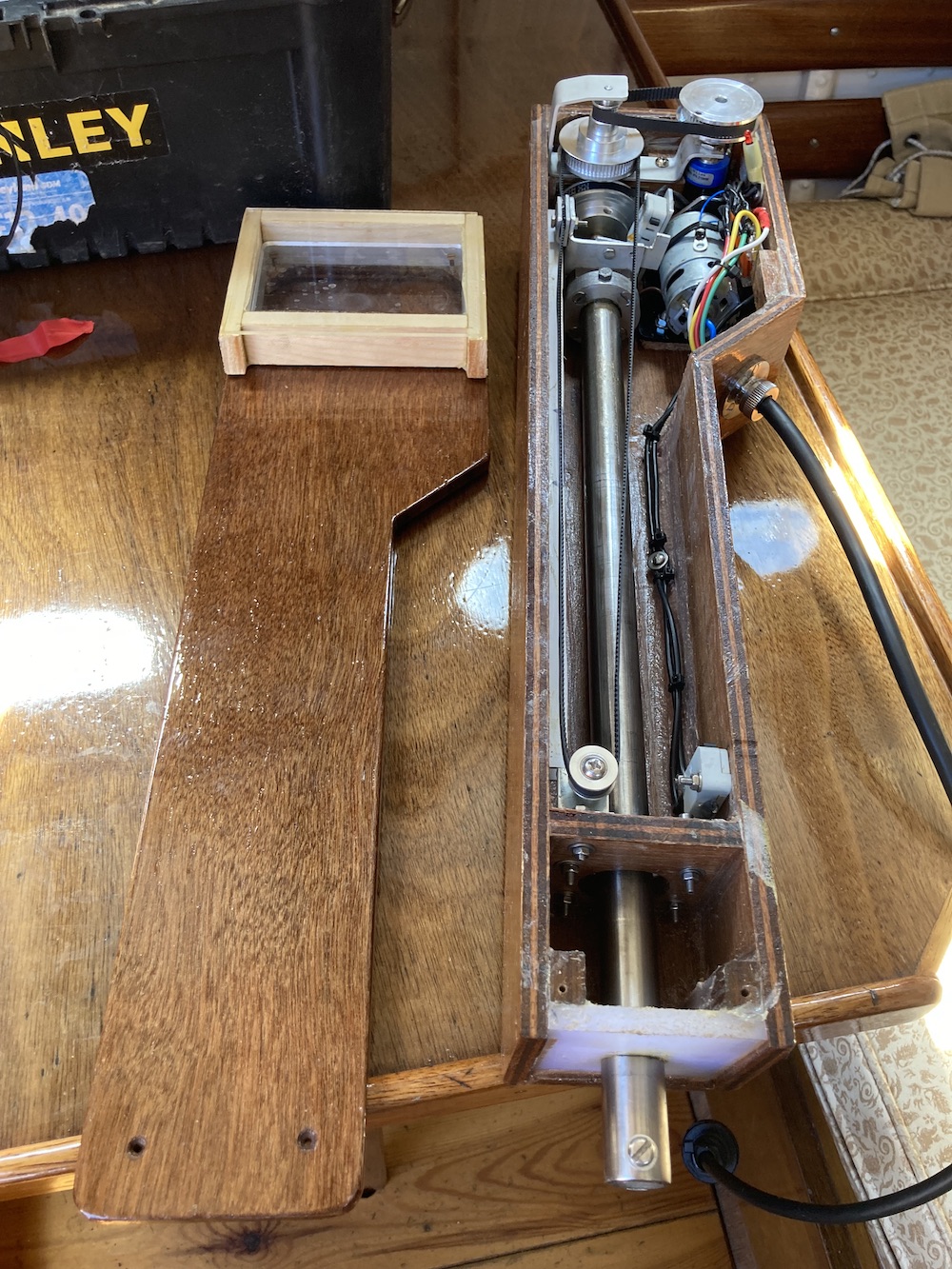2023-08-09, 08:45 PM
What with all the faff of trying to find a suitable Linear Actuator for pypilot, I decided to make one instead.
The motor is an RS 550. The ball screw is an inexpensive one from Amazon. The stroke is 300mm and even at 50% power it travels that distance in about three seconds.
It's bigger and heavier than I'd envisaged, but it's pretty robust, and if something goes wrong with it, I'll hopefully know how to fix it. Cheers!

The motor is an RS 550. The ball screw is an inexpensive one from Amazon. The stroke is 300mm and even at 50% power it travels that distance in about three seconds.
It's bigger and heavier than I'd envisaged, but it's pretty robust, and if something goes wrong with it, I'll hopefully know how to fix it. Cheers!




